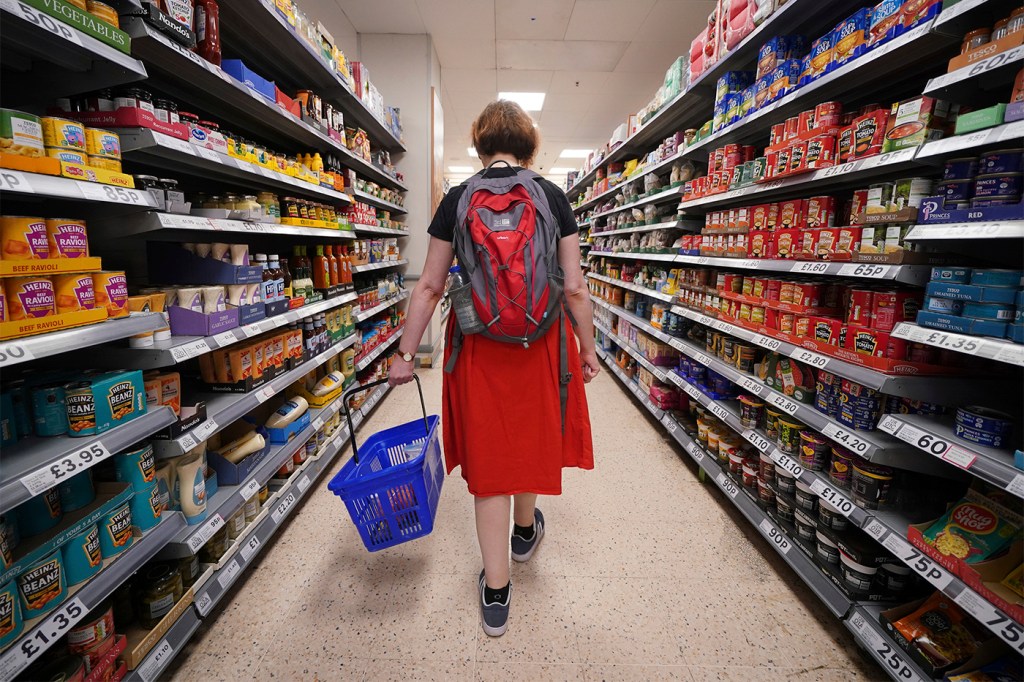Why your grocery bill
hasn’t followed the falling
inflation trend

Inflation may have fallen 6% from its June 2022 peak, but your grocery bill probably has not. And don’t expect to save money by eating out.
“We have a collision of factors that are impacting food prices,” says Nada Sanders, distinguished professor of supply chain management at Northeastern University.
Think about it like waves on the beach, she says.
“Some are coming really fast, and some are coming really slow,” Sanders says, “Others are easing and others are still kind of hitting and are about to hit — but it’s a whole host of factors that have an impact and they have cascading effects.”
Food prices rose 0.4% in January from December, a faster pace than the overall 0.3% rise in the Consumer Price Index, according to the U.S. Bureau of Labor Statistics’ latest inflation report.
Looked at on an annual basis, restaurant prices are 5.1% more expensive than a year ago, while grocery prices are up 1.2%.
But on an even broader time frame, supermarket prices are now 25% higher than in January 2020, while inflation has increased 19% over that same time, according to a recent report by the Groundwork Collaborative.
Consumers have noticed.
In February, the Wall Street Journal cited U.S. Department of Agriculture data to find that the percentage of household income dedicated to food was at a 30-year high.
Two-thirds of voters polled by Yahoo Finance/Ipsos in November cited food prices as where they’re most impacted by inflation, far outpacing the 1 in 10 who said they feel the impact through gas prices or higher rents.
Even the White House has noticed.
While President Joe Biden declined the traditional Super Bowl presidential interview, he did appear in a video calling for companies to end “shrinkflation,” or the practice of decreasing the size or quantity of a product but keeping its price the same. Meanwhile, the Federal Trade Commission announced Monday that it was suing to block the $25 billion merger of Kroger and Albertsons, the two largest U.S. supermarket operators in terms of sales.
“This supermarket megamerger comes as American consumers have seen the cost of groceries rise steadily over the past few years,” Henry Liu, director of the FTC’s bureau of competition, said. “Kroger’s acquisition of Albertsons would lead to additional grocery price hikes for everyday goods, further exacerbating the financial strain consumers across the country face today.”

Sanders says several factors are contributing to food costs remaining elevated.
First, we are still feeling the effects of the pandemic, particularly in the labor market. Through the Great Resignation, the auto workers strike, trucker shortages and other factors, labor has had the upper hand in the recent past as the labor market continues to defy expectations.
That has affected food prices at multiple points: for higher costs for the laborer picking fields of crops at the farm all the way to the waiter bringing the food to the table at your favorite restaurant.
At the supermarket, meanwhile, the pre-pandemic model of dynamic grocery pricing has generally gone out the window, according to John Lowrey, assistant professor of supply chain and information management and health sciences at Northeastern.
Lowrey explains that prior to the pandemic, grocers generally stocked the highest-quality, freshest food at 9 a.m. in anticipation of high-spending, quality-focused consumers who would shop around that time. Grocers would then discount items over the course of the day to accommodate more budget-minded shoppers who arrived later in the day. For example, think of an in-store bakery.
“You make sure the bakery’s got stuff fresh right on the sales floor at 9 a.m. and if it doesn’t sell by 5 p.m., you discount it by 20%,” Lowrey says.
But with the pandemic, shopping habits have become less predictable. With grocery margins in general a very low 3%, Lowrey says grocers are reluctant to offer dynamic pricing throughout the day for fear of losing out on the high-spending customers to other stores, particularly those who associate discounted prices with lower quality.
“I don’t want to be the first retailer to reduce prices when all other retailers are keeping prices high,” Lowrey says.
And just as how higher costs of labor affect multiple layers in the supply chain, uncertainty in customer demand multiplies up the supply chain for grocers.
“We call this the bullwhip effect,” Lowrey explains. “The more volatile the demand, these signals kind of amplify upstream and it makes it much more difficult for me to plan. And when planning is more difficult, that means there’s more cost.”
But it’s not just the residual effects of the pandemic that is keeping food prices high.
Climate change has also had an impact.
Sanders cites “massive droughts” that have slowed shipping on the Mississippi River and through the Panama Canal and have impacted the production of sugar from India and Thailand.
Featured Posts
“Just think about the whole host of products that something like sugar goes into,” Sanders says. “So, we’ve seen that in terms of higher prices of various dry goods that actually use sugar like cereal and so forth.”
Add in the largest avian flu outbreak in United States history, two years of the Russia-Ukraine war and its impact on wheat, corn and vegetable prices, and food prices remain high.
And there is one more factor.
“If you look at what consumers have done with regard to spending, that’s part of the reason, part of the story as to why inflation was so stubborn for so long,” Sanders says.
During the pandemic, Americans splurged on specialty items including organic produce, more meats and seafood, and even (remember that trend?) sourdough.
That being said, as Sanders noted, the factors affecting food prices are like “waves on a beach.”
The avian flu wave appears to be waning, and consumers are starting to pull back somewhat, Sanders says.
“On the one hand, you’ve got labor and you’ve got droughts and you have shortages of oil and wheat and sugar and all of that, so those prices are higher,” Sanders says. “But you know we’re finally seeing a little bit of tapering in terms of sticker shock, we’re finally seeing that.”











